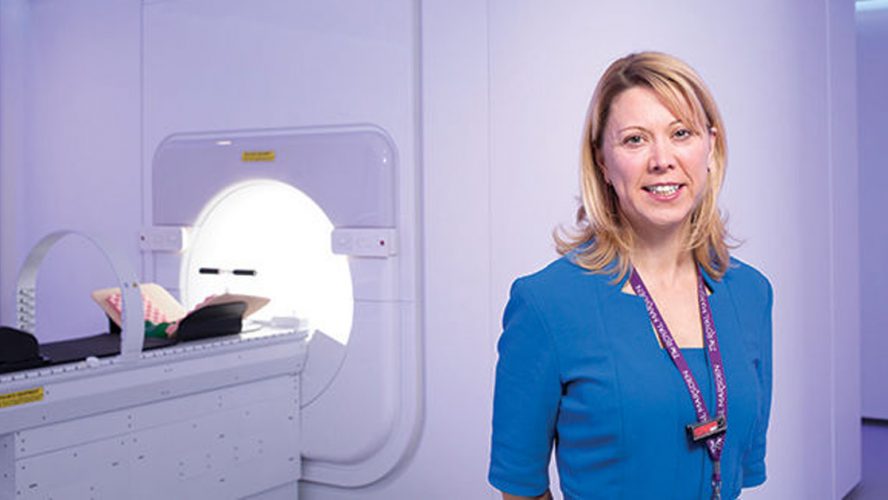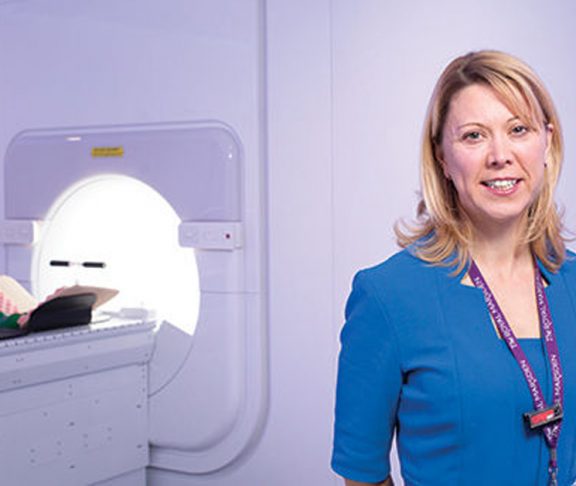Revolutionary equipment that combines imaging and radiotherapy to more reliably target tumours could improve patient outcomes and cut treatment courses.
The first Magnetic Resonance Linear Accelerator (MR Linac) in the UK – and the fourth in the world – should be in clinical use by the end of 2018.
Dr Alison Tree, Clinical Oncologist at The Royal Marsden, working in partnership with the Institute of Cancer Research (ICR), says: “The MR Linac will allow us to better target tumours that move in response to natural changes in the body, such as breathing, the bladder filling, or bowel changes.”
Tumours can move during treatment
The MR Linac combines a magnetic resonance (MR) scanner and a linear accelerator, so that it can track tumours that move and change shape – even during a treatment – to precisely target the radiation beam on them.
“Better targeting reduces the irradiation of surrounding healthy tissue, making it safer to deliver higher doses, and minimises side-effects says Dr Tree.
Trials of the MRI scanning element of the MR Linac on healthy volunteers – including local MP Paul Scully – are already underway. The trial is part of the study that involves trials in seven international centres designed to help radiotherapists optimise MR Linac images in order to guide the radiation beam more accurately.
Dr Tree says: “Being part of this study means we get faster results, so we can treat patients sooner.” Results already indicate that MR Linac could improve outcomes for pancreatic cancer patients.
Preventing beams hitting healthy tissue
The MR Linac is thought to be particularly valuable for treating any pancreatic, prostate and breast cancer, where the tumours are close to tissues that often move.
The pancreas lies close to the stomach and small bowel, both of which can change in shape, even during a treatment. MR Linac allows targeted delivery of high doses of radiation with less risk to other, non-cancerous tissue.
Prostate cancer treatment/recovery time could be reduced
The pioneering kit could also mean significant reduction in treatment times, side effects and inconvenience for patients.
“Currently, patients receiving radiotherapy for prostate cancer attend the hospital every day for four weeks. The outcomes are very good, but we want to minimise patient inconvenience and the MR Linac could help,” says Tree.
She explains: “Prostate cancer, unlike others, responds most effectively to large doses of radiation delivered over a short period. However, because the prostate lies close to the rectum, high doses risk damaging the rectum and increasing side effects.
“With MR Linac we can better target the prostate while avoiding the rectum, so we can safely deliver higher doses of radiation. Treatment time could be reduced to five days – or even just one, which will save time and money for patients and the NHS.”
Clinical trials on patients start soon, including a single-treatment trial for prostate cancer.


